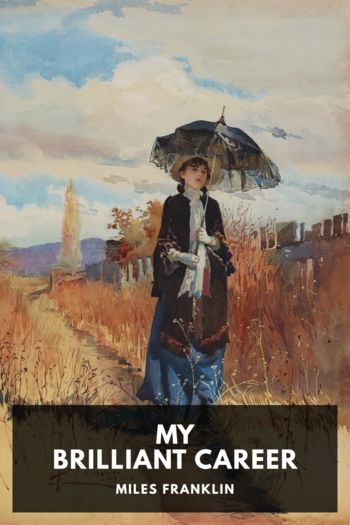Master of His Fate by James Tobin (free ebooks for android txt) 📗

- Author: James Tobin
Book online «Master of His Fate by James Tobin (free ebooks for android txt) 📗». Author James Tobin
Dear Father,
I hope you are having a good time down south.
[To Anna:]
Chief [Anna’s dog] is very well but seems to grow more and more lonesome just like me and Johny. The house seems just like an emty waistbasket. Now that father has left, mother seems allways to be on the go.
All through the busy days and nights of the holidays, FDR pondered a deeply important decision. He had told George Foster Peabody he was considering whether to buy the entire compound at Warm Springs. Now Peabody was waiting for his friend’s decision.
Down in Georgia, Tom Loyless was in the last stages of cancer. Soon the resort would lose the guiding spirit who had kept the place going.
That was one good reason not to buy Warm Springs. Without Loyless, who would run the place day to day and all year round?
There were other good reasons not to buy.
The purchase price, to start with. FDR would have to hand over roughly $200,000, the equivalent of two-thirds of all his holdings in stocks, bonds, and cash, most of it inherited from his father. He lived as if he were a rich man, but that was because his mother supplied the homes where he and his family resided. He had nothing like the resources of such truly wealthy friends as Van Lear Black or Vincent Astor. Buying Warm Springs would be an enormous financial risk.
Then would come the huge and difficult job of turning the resort into a full-fledged treatment center. New buildings and roads would be needed. Doctors and physical therapists would have to be hired. That would be long-term work. But polio patients were asking for treatment immediately. Even Loyless, who cared deeply about the place, was depressed by the people begging for help. “We have nothing to offer them,” he wrote FDR at one low point, “nothing to give them in the way of proper treatment—just groping blindly in the dark and trusting to luck.” How could they help these people while turning the place upside down to rebuild it?
FDR certainly didn’t need to buy Warm Springs just to do his exercises there. He knew that Peabody could probably keep the place going without FDR as owner. He could visit as often as he wanted. He would have more time for exercise if he didn’t buy the place.
But the more FDR thought about the compound, the bigger it grew in his mind’s eye—bigger in what it might mean for people with polio, bigger in what it might mean for himself, too.
He wanted to run things, to be in charge. He had never been able to run something entirely on his own—not in the state legislature or the Navy Department or Fidelity & Deposit or his law firms. Warm Springs would be just his. He could rebuild the place and shape the programs exactly as he wanted.
He understood the financial risk, but he believed the place could make money. He had spent plenty of time in Florida by now, and he had seen well-to-do northerners flocking south to follow the sun as the state’s economy boomed and long-distance travel beckoned to those who could afford it. Why couldn’t Warm Springs become a famous way-station for some of those travelers, he wondered. He was thinking it might appeal to two different sorts of visitors—people who had polio, who would come for physical therapy, plus vacationers coming for golf, hiking, and relaxation. He could do good for the cause of fighting polio and do well at the bank, too. He cared very little for amassing money for its own sake, but he longed for the freedom money could give him. Quietly he wished he could be free of his mother’s financial support and the power it gave her to interfere in his life. Warm Springs might just break him loose.
Then there was politics.
He had not been in Georgia long before he was arranging casual get-togethers with the state’s most powerful Democrats. In the 1920s the southern states were the party’s foundation, the so-called Solid South. Southern voters had gone for the Democrats in every presidential election since the Civil War. Any Democrat running for president had to earn the affections of that southern base. So wouldn’t it be fine if this aristocratic Yankee—not the sort of politician who naturally appealed to rural southerners—could say he’d made a second home in the heart of Dixie, and developed a fine humanitarian enterprise to help poor invalids rise up and walk? It might not be the main reason to buy Warm Springs, but it was certainly another good one.
So Warm Springs was not just a place where he might get his legs in better shape. It was also a place where the terrible blow he had suffered in 1921 might be transformed into something wonderful. Perhaps thousands of people would get a second chance they would never have had if he had never been stricken. By rebuilding Warm Springs, he could show the world what a paralyzed person could do.
And it might just help him become president.
So, shortly after New Year’s Day 1926, he met with George Peabody and talked over the terms of a sale. Then FDR composed a telegram to Tom Loyless, now in the final days of his life:
HAVE TALKED TO PEABODY AND AM ENCOURAGED TO THINK THAT AT LAST YOU AND I WILL SEE OUR DREAM CARRIED OUT.
Sara Roosevelt was against it. Basil O’Connor was against it. Eleanor was touched to see how deeply her husband wanted to own Warm Springs. But she, too, resisted the decision. Surely it would be wiser and easier, they all thought, to devise some way of doing warm-water therapy close to home, and without risking so much money.
“I know how you love creative work,” Eleanor wrote to him. “My only feeling is that Georgia is somewhat distant for you to keep in touch with what is really a big undertaking. One cannot, it seems to me, have vital





Comments (0)